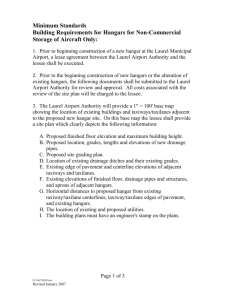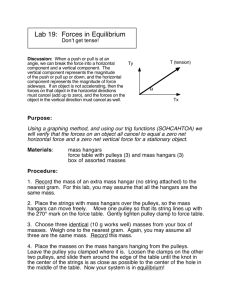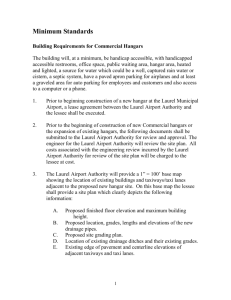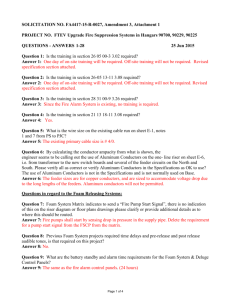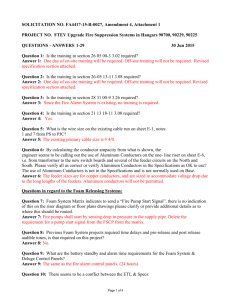Farewell to Harwell`s Hangars - Research Sites Restoration Ltd
advertisement
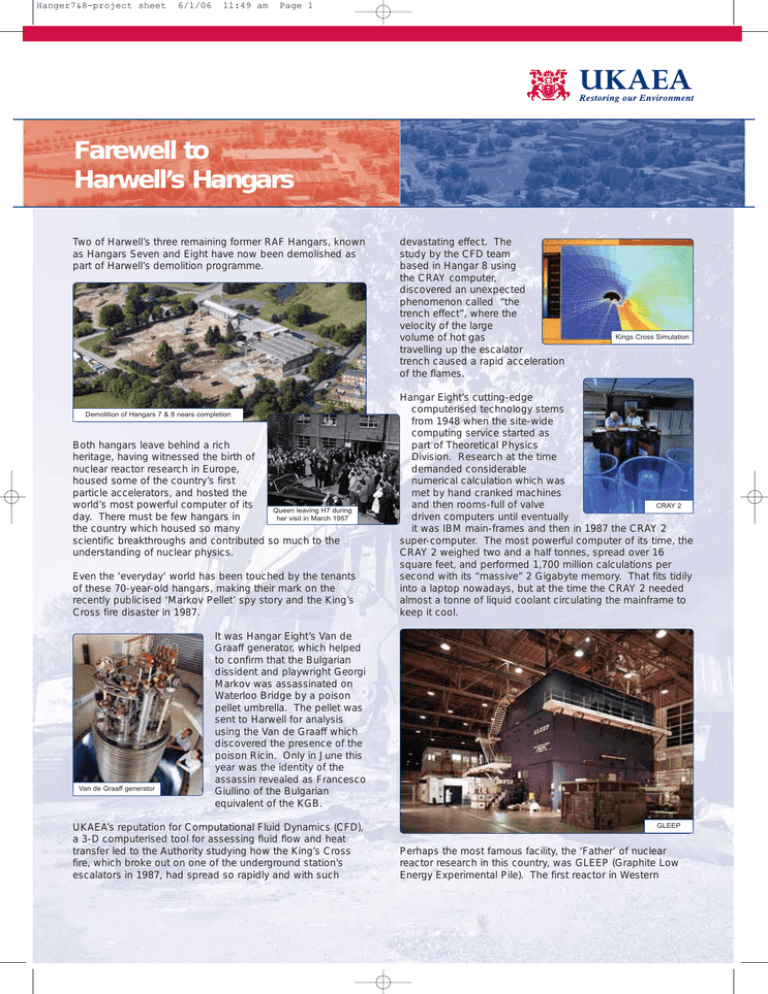
Hanger7&8-project sheet 6/1/06 11:49 am Page 1 Farewell to Harwell’s Hangars Two of Harwell’s three remaining former RAF Hangars, known as Hangars Seven and Eight have now been demolished as part of Harwell’s demolition programme. Demolition of Hangars 7 & 8 nears completion Both hangars leave behind a rich heritage, having witnessed the birth of nuclear reactor research in Europe, housed some of the country’s first particle accelerators, and hosted the world’s most powerful computer of its Queen leaving H7 during day. There must be few hangars in her visit in March 1957 the country which housed so many scientific breakthroughs and contributed so much to the understanding of nuclear physics. Even the ‘everyday’ world has been touched by the tenants of these 70-year-old hangars, making their mark on the recently publicised ‘Markov Pellet’ spy story and the King’s Cross fire disaster in 1987. Van de Graaff generator devastating effect. The study by the CFD team based in Hangar 8 using the CRAY computer, discovered an unexpected phenomenon called “the trench effect”, where the velocity of the large volume of hot gas travelling up the escalator trench caused a rapid acceleration of the flames. Kings Cross Simulation Hangar Eight’s cutting-edge computerised technology stems from 1948 when the site-wide computing service started as part of Theoretical Physics Division. Research at the time demanded considerable numerical calculation which was met by hand cranked machines and then rooms-full of valve CRAY 2 driven computers until eventually it was IBM main-frames and then in 1987 the CRAY 2 super-computer. The most powerful computer of its time, the CRAY 2 weighed two and a half tonnes, spread over 16 square feet, and performed 1,700 million calculations per second with its “massive” 2 Gigabyte memory. That fits tidily into a laptop nowadays, but at the time the CRAY 2 needed almost a tonne of liquid coolant circulating the mainframe to keep it cool. It was Hangar Eight’s Van de Graaff generator, which helped to confirm that the Bulgarian dissident and playwright Georgi Markov was assassinated on Waterloo Bridge by a poison pellet umbrella. The pellet was sent to Harwell for analysis using the Van de Graaff which discovered the presence of the poison Ricin. Only in June this year was the identity of the assassin revealed as Francesco Giullino of the Bulgarian equivalent of the KGB. UKAEA’s reputation for Computational Fluid Dynamics (CFD), a 3-D computerised tool for assessing fluid flow and heat transfer led to the Authority studying how the King’s Cross fire, which broke out on one of the underground station’s escalators in 1987, had spread so rapidly and with such GLEEP Perhaps the most famous facility, the ‘Father’ of nuclear reactor research in this country, was GLEEP (Graphite Low Energy Experimental Pile). The first reactor in Western Hanger7&8-project sheet 6/1/06 11:49 am Page 2 Europe, GLEEP operated at only 3kW and was used for initial investigations into how to design reactors and later as an international standard for materials testing and calibration. GLEEP was one of the longest running reactors in Western Europe, having been continually operated from 1947 until 1990. Hangar Seven was also not without its influences on the world of nuclear physics and everyday commodities. Hangar Seven was also home to the National Chemical Emergency Centre and numerous departments covering a range of commercial work in nuclear instrumentation, landfill research, industrial applications and artificial intelligence and software development. National Chemical Emergency Centre Innovation continued in the demolition of the hangars. Skilful planning and expertise coupled with the latest technologies were used to ensure the safe and efficient removal of the superstructures in a controlled environment. Innovative techniques were used to minimise human exposure at the workface to maintain an excellent safety record throughout the project. These procedures were complimented by a new state of the art fleet of specialist demolition machinery Harwell Synchrocyclotron Home to one of the country’s first particle accelerators, Harwell Synchrocyclotron, the hangar was the birthplace of synchrotron accelerators in the UK, and ultimately the precursor to the world-leading Diamond Synchrotron project, being built just a stone’s throw away. A tunnel, 6 metres underneath the hangar, enabled the split beams to reach target rooms adjacent to B3 (the former RAF petrol store) where scientists could measure the properties of nuclear materials. These days synchrotron light, which is intensely bright, has led to the development or improvements to many of our every day commodities, from chocolate, cosmetics and computers through to revolutionary drugs and surgical tools. The demolition of the two hangars will mark the completion of the 29-week project to restore the 30-acre area of the site. It has a fully serviced infrastructure and is expecting to be an attractive development opportunity for commercial use. ZETA Arguably, Hangar Seven’s most famous facility was ZETA (Zero Energy Thermonuclear Assembly), which started up on 12 August 1957. The largest experimental apparatus of its type at the time, ZETA was used for studying the controlled release of energy from thermonuclear reactions by heating deuterium gas to many times hotter than the surface of sun. Unfortunately the initial claims for fusion of deuterium atoms were unfounded. Angela Vincent Harwell Communications Manager Tel: 01235 435234 Email: angela.vincent@ukaea.org.uk
